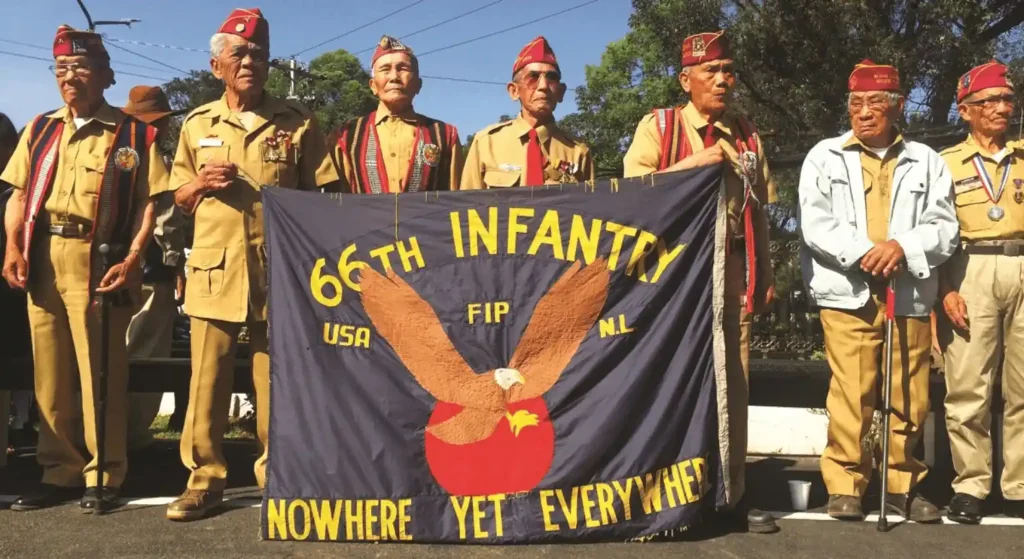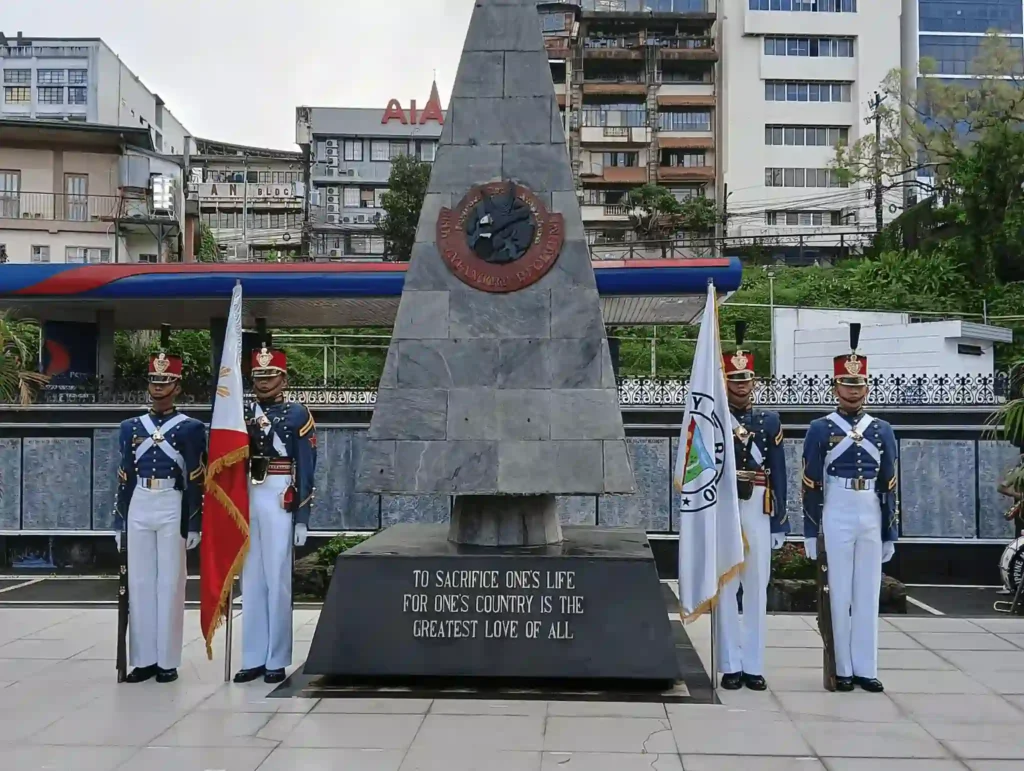Imagine barefoot men scaling cliffs with rifles slung over their shoulders, climbing higher and faster than anyone thought possible. These were the Igorot fighters of the Cordillera, warriors who left American troops stunned with their grit and fearlessness during World War II.
Often, when recounting the Philippine wartime narratives of 1945, tales are told about American generals like General Douglas MacArthur and his famous line about “returning” to the country, and the inhumane Bataan Death March that Filipino-American troops suffered at the hands of Imperial Japanese forces.
What’s missing from many of these stories, though, is the story of resistance on the side of indigenous Filipinos.
These men showed that courage is not bound by uniform or status. They defied stereotypes of being “primitive tribesmen” and instead proved themselves indispensable warriors.
Today, let’s take a look at the story of Filipino veterans who stood their ground together with their American comrades against the Japanese forces during World War II.
Table of Contents
- World War II in the Philippine Context
- Breaking Stereotypes: The Formidable Igorot Warriors
- The Battle of Bessang Pass (June 1945)
- Legacy of the Igorot Soldiers
- Carrying Their Courage Forward
- Frequently Asked Questions (FAQs)
World War II in the Philippine Context
Prior to Japan’s devastation from the atomic bombs dropped by the United States, the imperial forces wreaked havoc in the Philippines. Manila wasn’t the only city they devastated. Up in Northern Luzon, guerrilla groups were formed. They used hit-and-run tactics to harass Japanese troops and protect local communities.
Among these brave fellows were thousands of Igorots, an indigenous tribe from the Cordillera Region, who fought side-by-side with the Americans in the 66th Infantry Battalion of the United States Armed Forces.
In Northern Luzon, geography gave the resistance an advantage. The Cordillera mountains offered both shelter and natural strongholds. And no one knew those landscapes better than the Igorots, who had lived and thrived in the highlands for centuries.
This unique positioning made them critical to the Allied strategy. Through their efforts, they were able to liberate major cities in the region, such as Baguio and La Trinidad, Benguet.[1]

Breaking Stereotypes: The Formidable Igorot Tribe
Even before World War II, Americans already carried their prejudices about Filipinos. To them, we were “uncivilized,” the so-called “little brown brothers”[2] who needed to be “saved”—the ever-familiar “white man’s burden.”[3]
U.S. soldiers stationed in northern Luzon fully expected to encounter what they imagined were “barbaric” practices from the Igorot people. In their minds, these were pagan headhunters who’d just as soon take an American’s head as they would a Japanese soldier’s.
But what they saw instead turned that stereotype upside down.
Corporal Sylvan Kant recalled watching in disbelief as “small-statured men, women and boys carrying 5-gallon cans of water, heavy boxes of ammunition, rations and sacks of letters from home” marched right into the front lines—completely exposed to enemy machine-gun fire.
Far from the savages they had been warned about, the Igorots were saving lives. Kant himself believed their courage and sacrifice were crucial to the U.S. campaign’s success against the Japanese.

The Igorots weren’t just pack carriers either. They hauled supplies through mountain trails that Army vehicles couldn’t reach, ferried the wounded and the dead back to safety, and served as scouts who struck at enemy supply dumps.
In some battles, Igorot fighters even rode on the very fronts of tanks charging into Japanese lines. Their bravery quickly became the stuff of legend.
No less than Gen. Douglas MacArthur himself praised them, saying:
“For sheer, breathtaking and heart-stopping desperation, I have never known the equal of those Igorots.”
Coming from a man known for his lofty speeches, that says everything.
The Battle of Bessang Pass (June 1945)
Bessang Pass in Ilocos Sur was no ordinary mountain stronghold—it was one of the Japanese army’s last major defenses in Northern Luzon. Whoever held it controlled the supply lines to the Cordillera, and for six long months (from January 9 to June 15, 1945), it became the site of a brutal showdown.
The United States Armed Forces in the Philippines – Northern Luzon (USAFIP-NL), made up of American officers and thousands of Filipino fighters—many of them Igorots—led the charge.
Among its ranks was the 66th Infantry, a unit whose name came from combining three groups: the 43rd Infantry of the Philippine Scouts, and the 11th and 12th Infantries of the Philippine Army. Florimondo Esteban, son of a war veteran, explained that the number 66 wasn’t chosen for strategy but simply reflected this sum—a small detail that carried meaning for those who served under its banner.
His father, Lt. Florencio Esteban, and other Ibaloys had already survived the Bataan Death March. Instead of retreating into obscurity, they went back into the fight—raiding Japanese weapon stockpiles in places like Easter School in Baguio and even stealing a radio transmitter to cripple enemy communication.
When the infantry finally pushed into Bessang Pass in June 1945, the fighting was ferocious. Esteban himself narrowly escaped death when a Japanese sniper opened fire. He later wrote how he felt blood and flesh spatter his body—only to realize it was his companion, Private Guzman Suerte, who had taken the fatal blow from a machine gun burst.
But sacrifice brought results.
By June 14, the 66th and their allies recaptured Bessang Pass.[4] A day later, the Japanese garrison collapsed. That victory didn’t just open the road to the liberation of Northern Luzon—it marked a turning point in the Pacific war, breaking Japanese resistance and clearing the way for Allied forces to reclaim the Philippines.
Retired Brigadier General Arnulfo D. Bañez recalls his experience from this battle:
Legacy of the Igorot Soldiers
Despite their heroism, Igorot fighters remain more of a footnote than a headline in mainstream World War II histories. School textbooks often focus on generals and politicians, while the names of these mountain warriors are left in the margins.
But in the Cordillera, their stories have never been forgotten.
In Baguio City, for instance, a monument stands at Veterans Park honoring the bravery of the 66th Infantry. Across the region, veterans’ associations and oral traditions keep their legacy alive.

The Philippine government has also recognized their contributions through commemorations at Bessang Pass, though many argue the recognition has never quite matched the scale of their sacrifice. Commemorations, such as declaring June 14 as a provincial holiday in Ilocos Sur, are only done at the local level.
Recently, there’s been a hopeful step forward towards national awareness.
In Congress, House Bill No. 5719 seeks to integrate the study of local WWII events into technical and higher education curricula. If passed, it would ensure that the heroism of veterans from Baguio, Benguet, and nearby areas—and the pivotal role the region played in ending the war—will never fade from memory.[5]
Because remembering them isn’t just about honoring the Igorots alone. It’s about recognizing a larger truth: that the Philippine resistance in WWII was never the work of a few famous names, but the collective fight of communities who refused to bow to occupation.
As one war veteran once said, countering MacArthur’s ‘I shall return’: “We remained.”
I dare you to find a more powerful two-word statement than that.
Carrying Their Courage Forward
The Igorot soldiers were not just auxiliaries or background figures. They were heroes of the frontline, men whose skill and sacrifice helped turn the tide of war in the Philippines.
At Bessang Pass, they carved their place in history with courage that even hardened American generals could not ignore. Their story reminds us that victory was not just an Allied achievement, but a Filipino one—shaped by those who knew the land best and loved it fiercely.
Just as Bessang Pass was a turning point in the war, our memory must also turn toward the formidable indigenous Filipinos who fought tooth and nail for the liberation of their motherland.
Frequently Asked Questions (FAQs)
What is the historical significance of Bessang Pass?
Bessang Pass was one of the Japanese army’s last strongholds in Northern Luzon. Its capture in June 1945 opened the way for Allied forces to liberate Northern Philippines and helped break Japanese resistance. Today, it stands as a symbol of Filipino courage and sacrifice during WWII.
How did their contributions differ from those of other Filipino guerrilla groups?
Unlike many guerrilla groups that fought in lowland towns or coordinated with larger Allied operations, the Igorots specialized in mountain warfare. Their deep knowledge of the Cordillera terrain allowed them to cut supply lines, guide Allied forces, and execute daring raids that would have been impossible for conventional troops.
Why were American soldiers surprised by the Igorots?
U.S. soldiers came in with stereotypes, expecting “barbaric headhunters.” Instead, they witnessed disciplined, courageous fighters whose loyalty and skill shocked and impressed them.
How are the Igorots’ contributions remembered today?
Monuments, veterans’ parks, and commemorations—like those at Bessang Pass—honor their role. However, their stories are still less known outside the Cordillera, sparking calls for greater recognition in textbooks and curricula.
References:
[1] Igorot soldiers’ heroism remembered on 77th Day of Valor | Philippine News Agency
[3] The White Man’s Burden by Rudyard Kipling | Research Starters | EBSCO Research
[4] Igorots of 66th Infantry: Baguio’s wartime heroes
[5] VETERAN HEROES, BAGUIO’S ROLE IN WWII FOR RECOGNITION – Amianan Balita Ngayon




0 Comments